What Makes the Perfect Coffee? Q&A with Barista, Steph Marshall
Uni students and coffee are synonymous beings. From kick-starting a weary morning, to giving that little something extra 3 hours before an assignment is due, caffeine is the stimulant of choice. Steph Marshall was one of those uni students addicted to coffee, but was also involved in the making of it, working in a coffee shop since the age of 14. Now at age 22, she is a barista at Little Garran Cafe. I spoke to her about the often hidden coffee making process and what makes a great coffee.
Laura Clements: How long have you been a barista?
Steph Marshall: I started making coffee when I was 17, so almost 5 years ago now, but I started out very slowly.
LC: So it wasn’t like you started working at the cafe at 14 and went straight into coffee making?
SM: No, not at all. I saw it happening every weekend when I was at the cafe and saw people making it and then after a few years, I expressed an interest in learning. When I was leaving high school they wanted me to work while I was at uni.
So they started training me, but it was very very gradual. At first it was just learning how to make an espresso or learning to see what a good espresso looks like and then milk was a whole other thing. It was a very long time coming, to get where I am.
LC: I guess that’s kind of indicative of the coffee making process itself, you being eased into it?
SM: Definitely. People think it looks a lot easier than it is and people can make it look really easy and quick but as a matter of fact its a really difficult thing to learn, the technicalities around it.
How Do You Make Coffee?
LC: What are some of those technicalities, can you walk me through the process that goes into making a uni student’s coffee?
SM: Getting their flattie in the morning! (Laughs). So basically the beans are ground into a basket in the group head, which is the little handle that goes into the actual espresso machine itself.

The water is pressed through the ground beans at a really high pressure to extract the flavour from the ground beans. That’s the process called extraction which takes about 28 to 32 seconds, which is the ideal time.
From there you get this little cup of espresso which is a beautiful thing to taste on its own. And from there you add the milk, to any milk based coffee.
Milk itself takes about 15 to 20 seconds to steam. But you’ve got to get the texture of the milk right, you’ve got to have a good espresso and then you’ve got to blend them well to bring out the flavour of the coffee as complimented by the milk.
So there are a lot of steps that go into making the flat white that you get every morning that could make it good or make it crap.
What Can Go Wrong?
SM: So many people don’t realise that there are heaps of different variables that go into the one cup of coffee that you’re tasting. So many things can go wrong in that process.
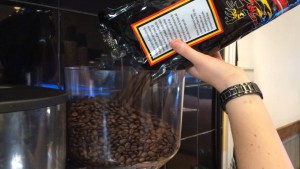
From where the beans are grown on the other side of the world, to how they’re collected, to how they’re blended together, to how they’re roasted together, to how they’re packaged, to how they end up in the hopper, to whether they’re kept stale or fresh enough.
Then to how they’re ground out, whether the dosage in the espresso is right (as in the amount of coffee that’s in the basket itself). And then whether the amount of water pushing through is right…there are so many things!
The Extraction Process
LC: Let’s zero in on one part of that. When you’re talking about the extraction of water through the coffee in the group head, too much, not enough – what can change the taste?
SM: Basically it depends on how fine or how coarsely you’ve ground your coffee. The baristas will be using scales and weighing out and adjusting the grinder a lot to get the perfect coarseness or fineness depending on the coffee type they’ve chosen to use. The amount of water that’s pressed through it, as it soaks into the beans in the extraction, that will affect the taste. The speed at which the water flows in between in the coffee grind, that is what you can see in the espresso pour as to how fast or slow it is.
Too little space for the water to flow through the beans, that is the beans being too fine, is going to slow down the water flowing through and that will make the drip really slow and really dark looking. That will cause a really bitter cup of coffee.

This is as opposed to really coarsely ground beans, where there’s too much space for the water to flow through. It’ll come out quite fast and it’ll be a pale golden blonde colour. This is called ‘blonding’ when the coffee pours too quickly and it will leave quite an acrid, acidic taste to the coffee.
It’s all variables like these that affect the taste of the espresso and the resulting cup of coffee.
Steaming the Milk
LC: So we’ve got our espresso that’s had the water extracted through it, what about the milk, what can go wrong there?
SM: Burning the milk is the biggest problem. People judge a coffee on how it looks, a lot of people think latte art means its a great coffee, which most of the time is true, but not necessarily. The milk – its all about the texture. You want the milk to be as silky as possible and as smooth as possible.
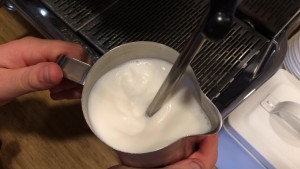
The process of heating the milk is called stretching because you’re stretching the proteins in the milk itself and that’s what causes the difference between the watery consistency milk at the bottom of the jug and the fluffy foam at the top. Always you’ll end up with really light bubbly foam at the top with a dense layer of foam through the middle of the jug and that’s what you put into cappuccinos and the top of a latte and macchiato.
The texture is the important thing, you want to get it to the right temperature. Coffee is served at about 60 to 65 degrees [celsius], generally. Anything higher than that, 70 degrees. You have the oldies who come in, wanting their 80 degree coffee, it just kills you because you know that the milk is going to be burnt and that affects both the taste and the consistency of the milk.
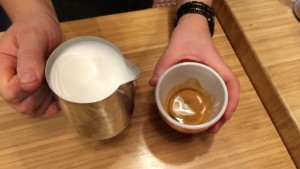
So basically if you don’t have milk that’s a good silky texture, its not going to blend well with cremea, which is the oil on top of the espresso, the coloured part of the coffee. That’s where a lot of the taste is in the coffee. If the cremea can’t blend with the really well stretched milk it can’t get good latte art and it’s not going to be a really satisfying cup to taste.
LC: Wow, so a lot can go wrong there. With that in mind Steph, what is your go-to coffee?
SM: A double shot flat white if I’ve got somewhere to be, things to do during the day, otherwise there’s nothing like the first espresso first thing in the morning when you’re starting up the machine. Or a piccolo latte if you need something small, but a long black if you’re hungover!
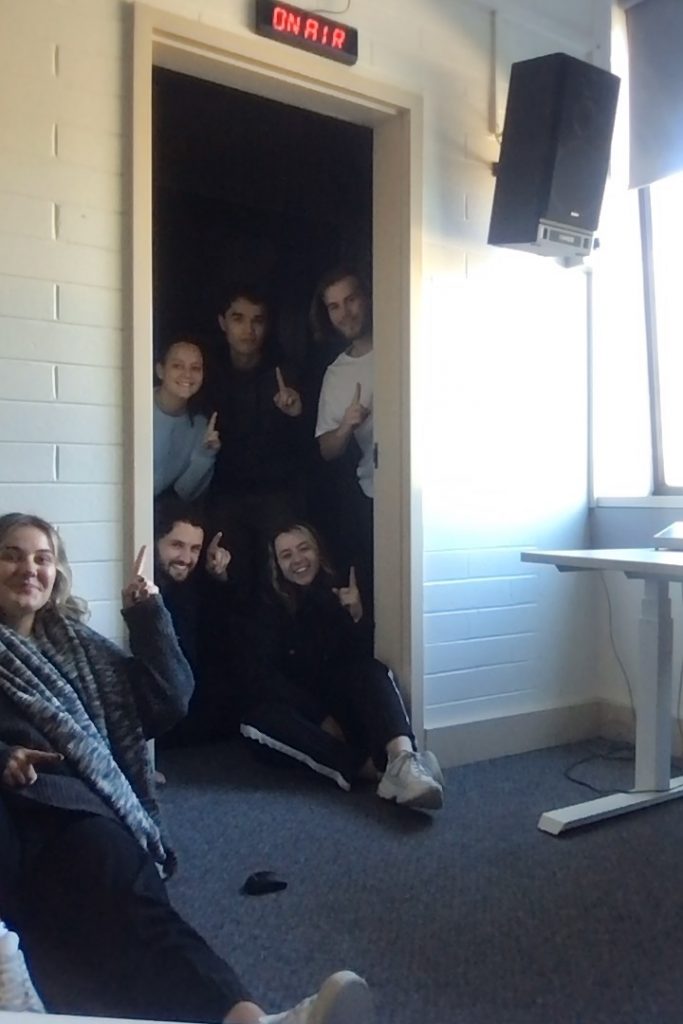


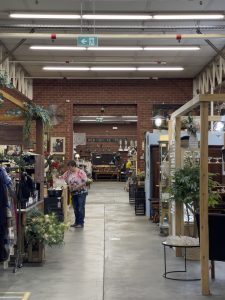

Be the first to comment!